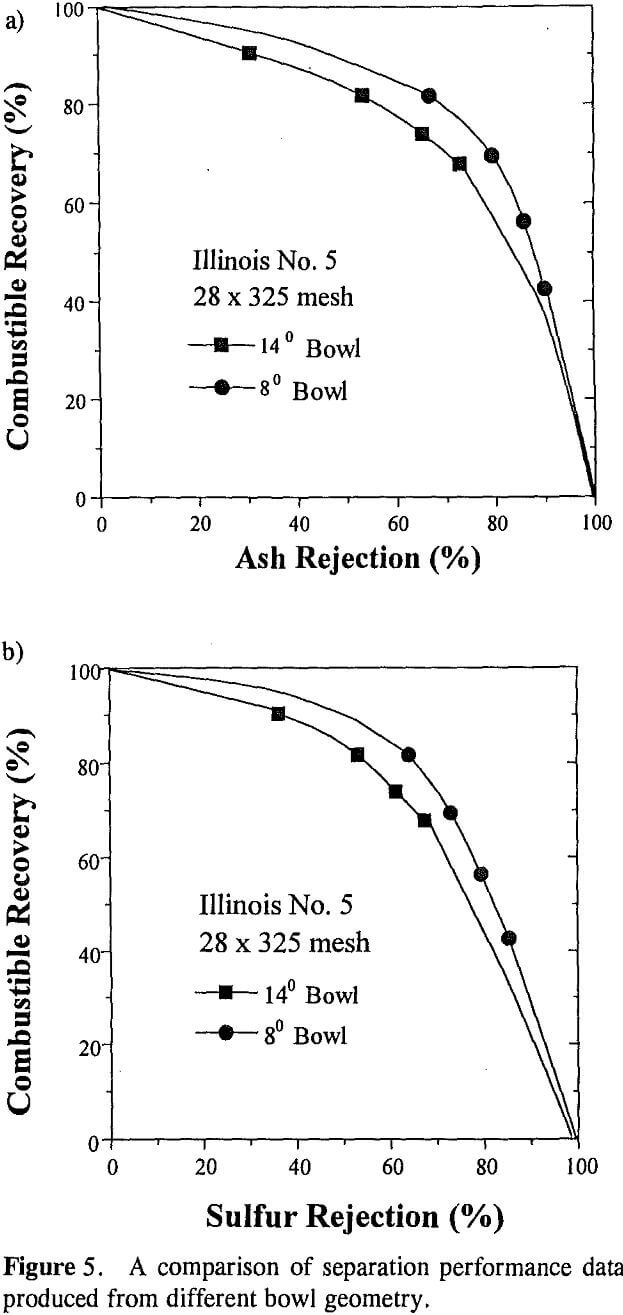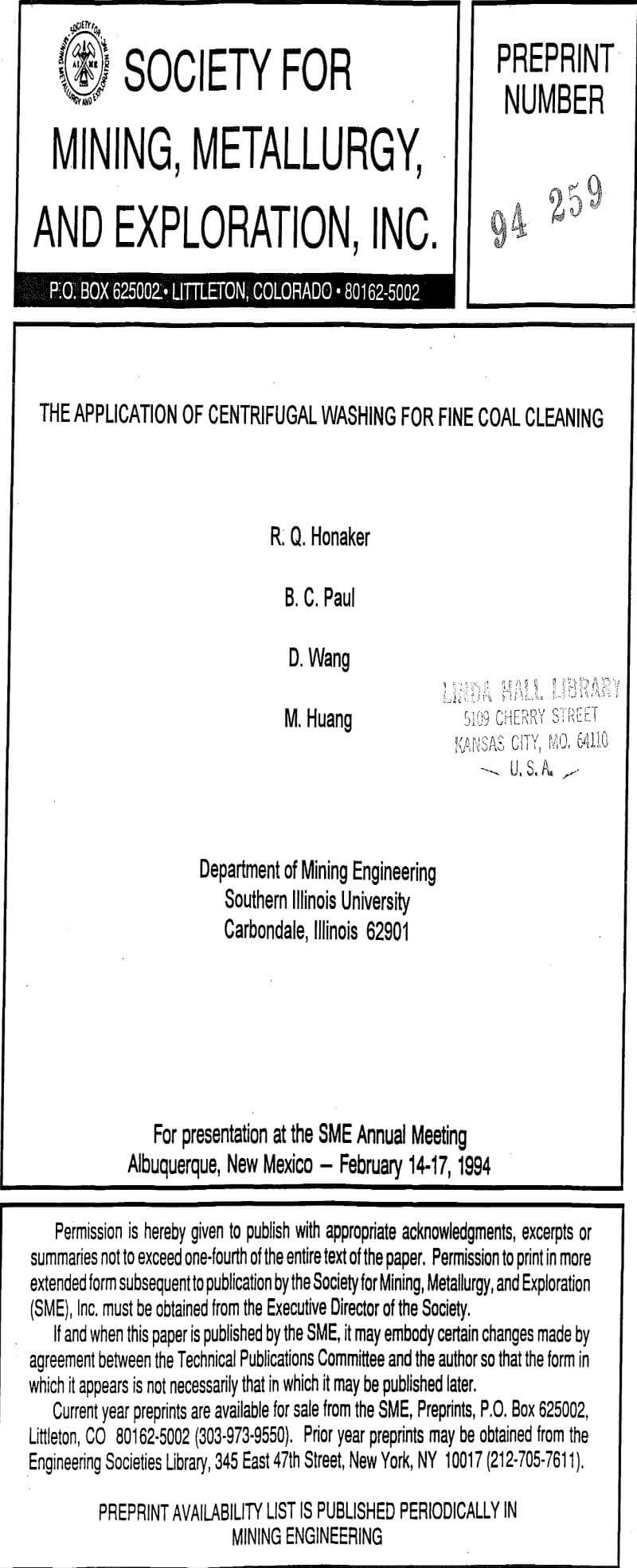Table of Contents
The most common method used for cleaning the fine fraction in today’s coal preparation plants is froth flotation. Past research and practice has found that froth flotation achieves excellent separation efficiencies for fine coals having only a small fraction of middling particles. However, its efficiency decreases sharply as the concentration of middling particles increases due to the flotation of high-ash particles having a small amount of hydrophobic coal present at the coal surface. Since gravity-based processes are much more efficient at treating middlings, the application of centrifugal washing for fine coal cleaning has been studied with an emphasis on the primary cleaning of fine circuit feed. Results will be shown from a parametric study using a Falcon centrifugal concentrator which reveals that the separation performance is a function of particle size, bowl geometry, feed solids content, and feed rate.
A better technical and economical means of treating fine coals that have a high middlings and/or pyrite content may be to use a gravity-based separation method. Gravity processes have always been known to be more efficient at treating middlings. Recent studies comparing the washability curves generated for fine coal using centrifugal techniques and release analysis curves have proven that gravity-based separation processes are more efficient than froth flotation at treating middling particles.
One method of improving the efficiency of gravity-based processes for the treatment of fine particles is to apply an enhanced gravity field using a centrifugal device. In this publication, results will be reported from a study which examined the feasibility of using enhanced gravity separators to efficiently treat fine coal. A semi-batch centrifugal concentrator manufactured by Falcon Concentrators Inc. was used in the study to treat both a flotation concentrate and a flotation feed.
Falcon Concentrator
The Falcon centrifugal concentrator is an enhanced gravity separator which utilizes a large centrifugal force to cause deposition and stratification of the fine particles against the inside of a smooth centrifugal bowl. The feed is introduced at the bottom of the bowl and onto a spinning rotor. An impeller hurdles the feed against the wall of the rotor. The bottom of the rotor is called the migration zone, and is inclined at a slight angle so that the enhanced gravity field generated by the spinning rotor can be resolved into two force components.
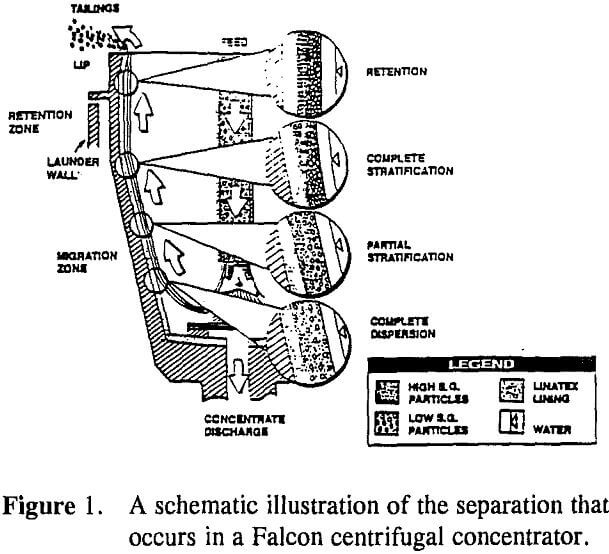
The angle of incline on the rotor surface changes near the top of the rotor so that it is now parallel to the axis of rotation. As a result, there is no weak gravity force component to drive particles upward toward the top of the rotor. This part of the rotor is called the retention zone.
Test Samples
Initial experiments were conducted using the 100 x 0 mesh flotation concentrate collected from a preparation plant treating the Pittsburgh No. 8 seam coal. This sample was used to evaluate the effectiveness of the Falcon concentrator to provide further rejection of the pyritic sulfur after flotation. The sample contained approximately 8.25% ash and 1.35% total sulfur and had a solids concentration of 7.5% by weight. Representative samples having a volume of 20 liters were obtained from the 200-liter bulk sample using a sump-pump recirculation arrangement which had a T-connector for sample collection on the recirculation line.
Results and Discussion
The sulfur content decreases from 1.35 % to 1.1 % after the first three cleaning stages which corresponds to a combustible recovery value of about 85%. During these same stages, the ash content was reduced from 8.25% to approximately 5 %. The ash and sulfur contents of the underflow sample were 33% and 4%, respectively, which are relatively high in comparison with the feed content values. These results represent an ash rejection of approximately 52% and a sulfur rejection of 34%.
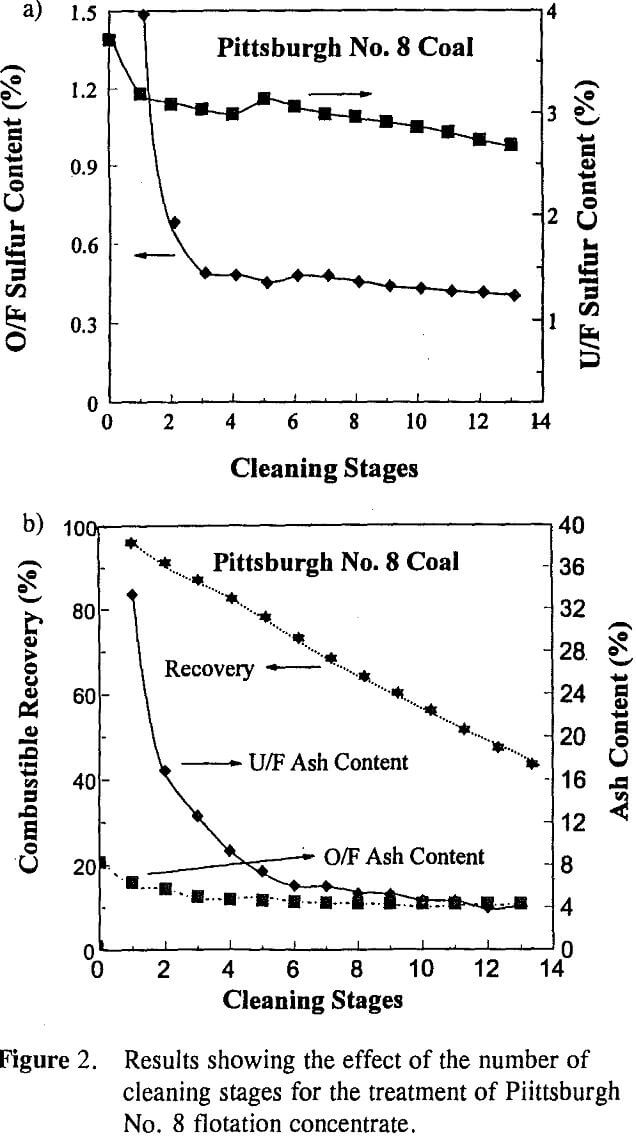
Treatment of the 28 x 0 mesh fine circuit feed using four cleaning stages resulted in a reduction in the total sulfur content from 2.9% to 1.59%. The corresponding decrease in the ash content was from 20.27% to 13.54%. Screening the final overflow found that most of the ash-forming material reporting to the final product was in the -325 mesh fraction, indicating the presence of a large amount of sub-micron clay particles.
In contradiction to the ash content results, the best sulfur rejection values were obtained from the -325 size fraction. The total sulfur content in this fraction was reduced from 5.2% in the feed to 1.0% in the overflow product generated after 4 cleaning stages.
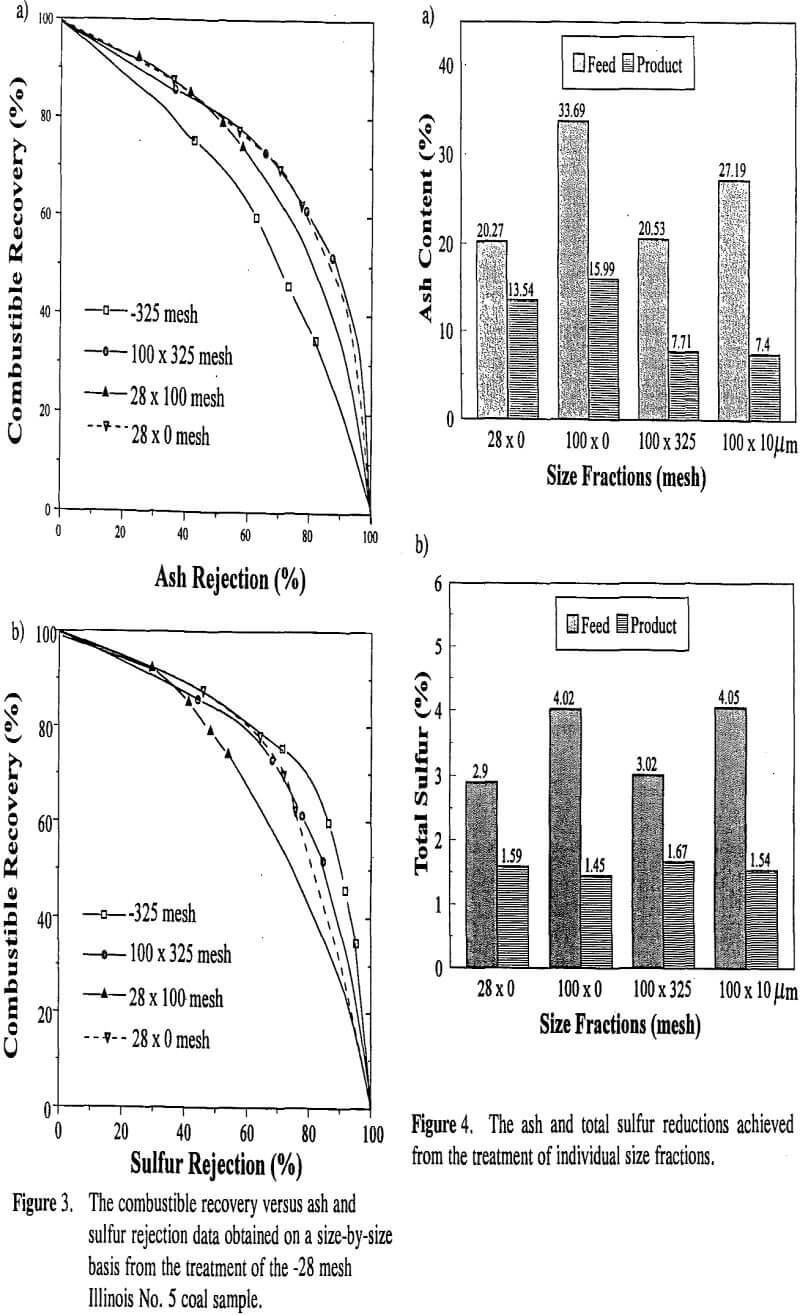
The sulfur content of the clean coal product or final overflow for each size fraction appears to approach approximately the same value (= 1.5%) as indicated by the product sulfur values. This may indicate that only the organic sulfur remains and, thus, near complete removal of the pyritic sulfur has been achieved, or the maximum amount of pyritic sulfur that can be rejected without grinding has been reached.
The capacity of a centrifugal washer is controlled by its volumetric flow rate. A fast flow rate through the bowl will tend to wash material to the overflow that may have normally reported to the underflow. This condition establishes a maximum volumetric flow rate for a given bowl diameter.
